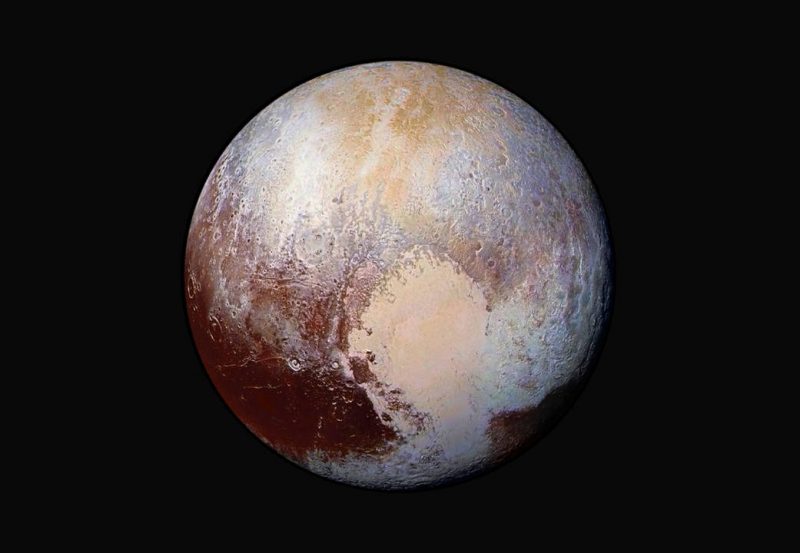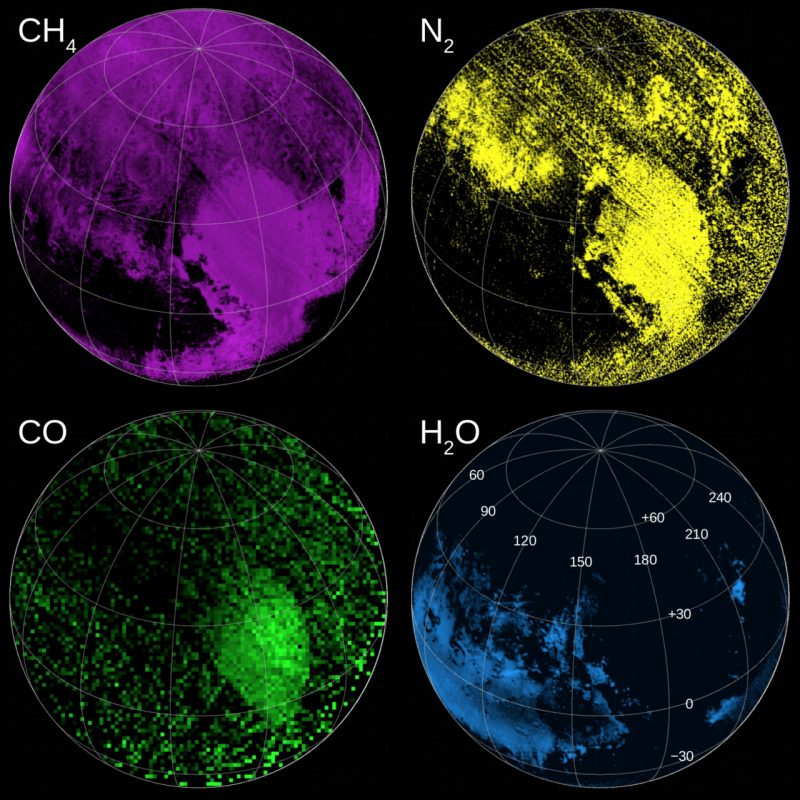
The idea of smaller bodies in space sticking together to make larger ones isn’t new. In fact, Earth and the other major planets are thought to have formed in just that way, billions of years ago, after what astronomers call planetesimals – rocklike objects orbiting the young sun – began colliding with one another. So the idea of Pluto forming from a billion comets seems logical enough. After all, Pluto orbits in the outer solar system, where things are colder. The outer solar system is the realm of icy comets, still sometimes called dirty snowballs. Since the New Horizons spacecraft passed Pluto in July 2015, astronomers have had unprecedented data about it. That’s how two scientists from the Southwest Research Institute (SwRI) in Boulder, Colorado, were able to scrutinize this idea, developing what they call the giant comet cosmochemical model of Pluto formation.
Help EarthSky keep going! Please donate what you can to our annual crowd-funding campaign.
The peer-reviewed journal Icarus published their study on May 23, 2018.
The SwRI scientists used New Horizons’ data to take a hard look at Pluto’s composition. They compared what they learned about Pluto with data from a first-of-its kind comet mission, called Rosetta. In the Rosetta mission, a spacecraft accompanied a comet in its orbit around the sun for about two years.

The SwRI scientists looked specifically at the nitrogen-rich ice in a region of Pluto called Sputnik Planitia. That is the large glacier that forms the left lobe of the bright heart-shaped feature seen in New Horizon images. Christopher Glein of SwRI, the new study’s lead author, commented in a statement:
We found an intriguing consistency between the estimated amount of nitrogen inside the glacier and the amount that would be expected if Pluto was formed by the agglomeration of roughly a billion comets or other Kuiper Belt objects similar in chemical composition to 67P, the comet explored by Rosetta.
He added:
Our research suggests that Pluto’s initial chemical makeup, inherited from cometary building blocks, was chemically modified by liquid water, perhaps even in a subsurface ocean.
For their new study, the scientists also investigated a possible model of Pluto’s formation, in which the dwarf planet formed from very cold ices with chemical composition more closely matching that of the sun than comets. They commented:
…the solar model also satisfies some constraints. While the research pointed to some interesting possibilities, many questions remain to be answered.

Bottom line: By comparing data from the 1st-ever Pluto flyby and a 1st-ever comet rendezvous mission, scientists developed what they call ‘the giant comet’ model of Pluto formation.











